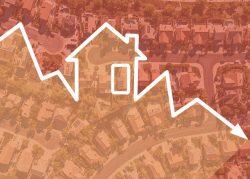The latest study on the costs of residential real estate points the bulk of would-be buyers in Los Angeles coming up short on an industry standard of affordability.
For decades, many real estate experts used a rule of thumb that a house was affordable if its price was equal to or less than 2.6 times a potential buyer’s annual income.
Online brokerage Clever Real Estate compared median incomes and median home prices in markets across the nation and determined that Los Angeles is the country’s least affordable metro area.
California took the top four spots and six of the top 10.
The study is a flipside of another published last week by RentCafe, which touted both Los Angeles and California in general as claiming outsized shares of the most expensive zip codes for home prices nationwide.
The Clever Real Estate study’s consideration of income puts the recent run of red-hot sales market and price increases in a different light.
“I think we already knew that California’s pretty expensive, but this really paints a picture that earnings aren’t matching up to the cost of living,” said Francesca Ortegren, a data scientist with the company. “So buying a house in some of these places is seemingly impossible.”
The study analyzed data on local demographics from the U.S. Census Bureau alongside home values from Zillow for the 50 most populous metro areas. The firm considered metro regions according to the Census Bureau’s metropolitan statistical area designations. The Los Angeles MSA includes L.A. County and Orange County; the San Francisco MSA includes San Francisco, Oakland and Berkeley.
The study also measured how both home values and incomes have changed nationwide since 1965, highlighting a dramatic, if familiar, contrast. During the past five and half decades American home values more than doubled from $172,000 in current inflation-adjusted dollars to $375,000.
Americans’ incomes, on the other hand, have remained mostly flat. The national median household income has gone from about $60,000 in 1965 to $69,000. And the slight gain over time is less than it might seem, Ortegren said, because more households today have multiple earners compared to the 1960s.
For the L.A. region, the report found an average home value of $783,000 and a median household income of $80,000, constituting a price-to-income ratio of 9.8 to 1 — nearly four times the recommended ratio.
The second least affordable metro area was San Jose, where both the income ($151,000) and home value ($1.38 million) figures were much higher, giving the center of the notoriously expensive Silicon Valley region a price to income ratio of 9.1 to 1. San Francisco was third, followed by San Diego and New York.
The federally-designated Riverside MSA – reflecting Riverside and San Bernardino counties, which together form what’s referred to as the Inland Empire to the east of Los Angeles – came in as sixth-least affordable. The Riverside MSA, generally seen as the market for buyers priced out of the Los Angeles MSA, posted an average home value of $463,000 and an income of $78,000, for a ratio of about 5.9 to 1,
Sacramento ranked eighth. Miami-Fort Lauderdale, Seattle and Salt Lake City rounded out the top 10.
California’s soaring housing costs have been well documented, but recent analyses have helped add timely context to the trend.
In addition to the recent report on most expensive zip codes, another published in late September analyzed housing affordability across large American cities by comparing median household area incomes and median area listing prices. In that analysis California had 10 of the top 20 least affordable cities; in L.A., which ranked just behind New York and Miami for least affordable, the average household would have to spend 81% of its monthly income on payments for a median-priced home.
In Clever’s report, Pittsburgh, Cleveland and Oklahoma City ranked as the country’s most affordable metro areas. In Pittsburgh, the median household income was $85,000, and the average home value was $190,000, giving the area a very affordable price to income ratio of 2.2.
That’s would look like a a statistical aberration for most Californians Home prices in the state are forecast to increase again next year, although less dramatically than they did from 2020 to 2021. The trend means more and more would-be homebuyers — especially first-time buyers — will be priced out of the market.
“We saw this with Millennials,” Ortegren said, who in recent years have been forced by soaring prices to delay home buying later than previous generations or give up on the idea altogether. “The pandemic possibly made it worse.”
Read more


